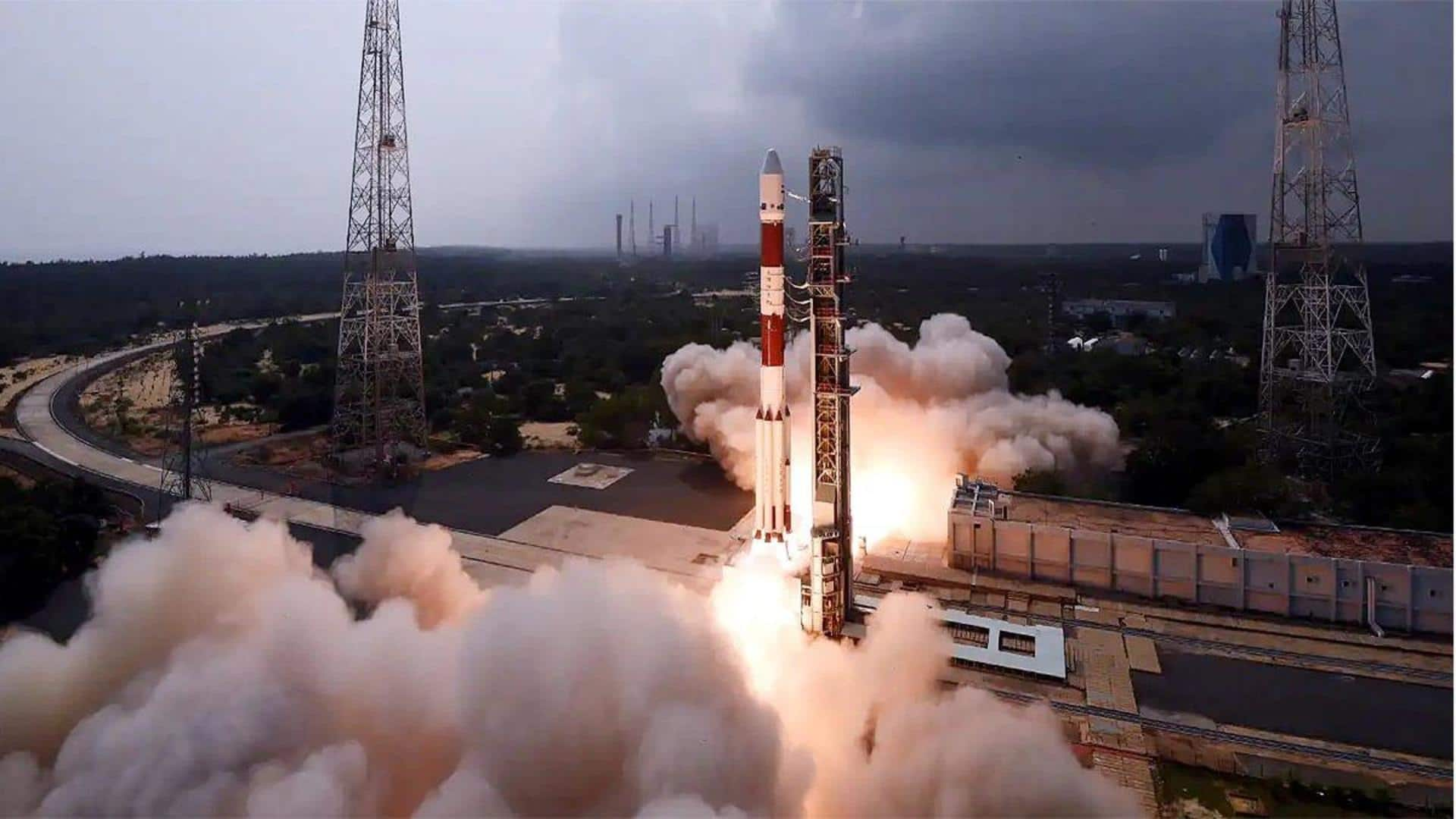
ISRO's PSLV-C55 mission takes off with 2 Singaporean satellites
What's the story
Indian Space Research Organisation (ISRO) successfully launched the Polar Satellite Launch Vehicle C55 (PSLV-C55) mission today ie. April 22.
The third launch of the year set forth from the Satish Dhawan Space Centre, Sriharikota, at 2.19 pm today.
The PSLV-C55 launch vehicle carried Singapore's TeLEOS-2 (a Synthetic Aperture Radar satellite) as the primary payload, and Lumelite-4 (a technology demonstration nano-satellite) as a co-passenger unit.
Purpose
The mission will help ISRO carry out in-orbit experiments
PSLV is ISRO's third-generation launch vehicle. The latest PSLV-C55 mission will help the research agency carry out in-orbit scientific experiments.
The primary TeLEOS-2 satellite will offer day and night coverage for all weather scenarios, imaging at 1m full-polarimetric resolution.
Meanwhile, LUMELITE-4, the cutting-edge 12U satellite will work to improve the maritime safety of Singapore's e-navigation system, benefiting the world's shipping industry.
Satellite #1
What is TeLEOS-2?
The TeLEOS-2 satellite is a joint work of DSTA (Defence Science and Technology Agency), a statutory board under the Singapore government, and the country's multinational technology group, ST Engineering.
The satellite once deployed and operational will support the imagery needs of various agencies within the Singaporean government.
The TeLEOS-2 weighs about 741kg, and is carrying a Synthetic Aperture Radar (SAR) payload with it.
Satellite #2
Brief info about LUMILITE-4
The LUMELITE-4 satellite, weighing 16kg, is jointly developed by the Institute for Infocomm Research (I2R) of A*STAR and the Satellite Technology and Research Centre (STAR) of the National University of Singapore.
The satellite will be used for the technological demonstration of the high-performance space-borne VHF Data Exchange System (VDES), a communication payload, which has been created by I2R and STAR's scalable satellite bus platform.
More
The mission has the PSLV Orbital Experimental Module (POEM)
The PSLV-C55 mission has the PSLV Orbital Experimental Module (POEM), to perform in-orbit scientific experiments during the fourth stage of the launch.
It will use the final (PS4) stage of the launch vehicle as a "stabilized platform" to conduct scientific experiments through seven non-separable payloads, which belong to ISRO/Department of Space, Bellatrix, Dhruva Space, IIST, and the Indian Institute of Astrophysics.
Scenario
Payloads in final stage will be powered by solar energy
This final (PS4) stage of PSLV-C55 will be used as a platform for experiments after satellite separations during the third stage.
After the primary and co-passenger satellites are separated, the ground command will power on the non-separable payloads.
The payloads will be provided the required energy by the solar panel mounted around the PS4 tank which will be deployed once the stage achieves stabilization.